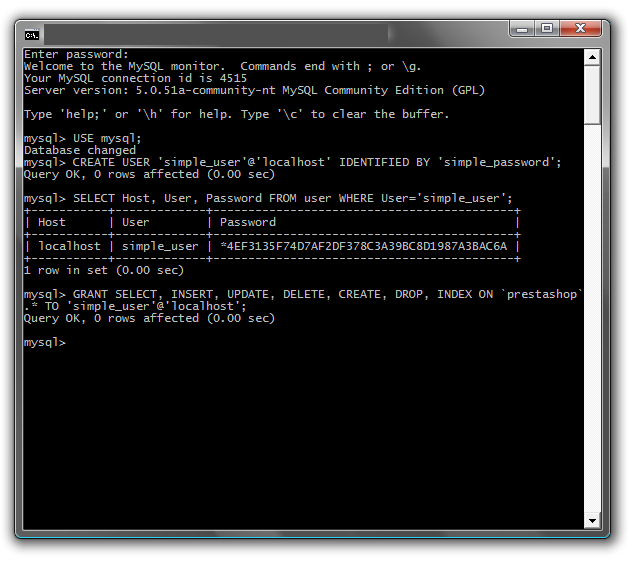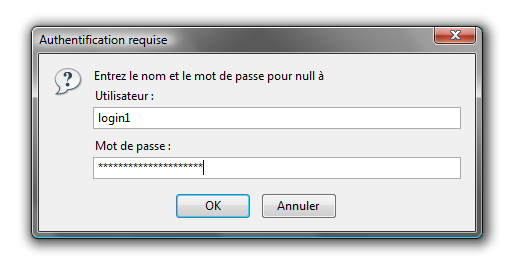
Before you begin, you must first install PrestaShop.
This guide will help you configure a walled Web server.
To configure PHP, you must edit the php.ini file.
The register_globals rule, when activated, defines all environment variables (GET, POST, COOKIE, SERVER...) as global variables. It is unsafe to use unset variables, because a user could easily set a value into this variable by using the GET method, for example. It is therefore imperative to set register_globals to OFF.
The magic_quotes directive automatically adds slashes to all characters (', ", \, NULL) for all types (GET, POST, COOKIE). This option must be set to OFF because it will addslash each variable even if it does not need to be addslashed. Moreover, some Web applications overlook this option, so some variables will be addslashed twice.
The allow_include_url rule is used to allow to include any file via the require and include statements, even if it is not come from your Web server. This option must be set to OFF, because if one application on your web server suffers of include vulnerability, users will be able to include any file from any server and those will be executed on your own server.
PHP Safe Mode enables you to limit access to some potentially harmful functionalities, and forbid others. It is useful to establish a security perimeter, by configuring a Web folder as base folder and forbidding PHP to come down this one.
To activate Safe Mode, you just need to set “safe_mode” to “On” into php.ini file. This is a configuration example:
safe_mode = On safe_mode_gid = Off ; ... safe_mode_include_dir = ; ... safe_mode_exec_dir = “/var/www/bin” safe_mode_allowed_env_vars = PHP_ safe_mode_protected_env_vars = LD_LIBRARY_PATH,LD_PRELOAD ; ... open_basedir = “/var/www/prestashop” disable_functions = shell_exec,system,sleep,syslog,link,sockopen,ftp_connect, pfsockopen,socket_connect,usleep,symlink,virtual,ini_set,ini_alter, ini_restore,passthru,popen,exec disable_classes = ; ... register_globals = Off magic_quotes_gpc = Off allow_url_fopen = Off allow_url_include = Off ; ... [MySQL] mysql.allow_persistent = On mysql.max_persistent = -1 mysql.max_links = -1 mysql.connect_timeout = 10 mysql.trace_mode = Off ; ... [Session] session.save_handler = files session.save_path = “/var/www/sessions” session.use_cookies = 1 session.name = PHPSESSID session.cookie_path = / session.cookie_domain = session.cookie_httponly = session.serialize_handler = php |
The only problem is Safe Mode is included in PHP. If PHP machine is vulnerable then user could bypass this Safe Mode. If you have several web applications on the same server, or if you just want to protect your server by an other solution, I invite you to read the first paragraph of the recommendations part.
MySQL have an administrator account as default, which permit access to all data-base’s data, no matter the database. The administrator have all rights and can do every possible actions. To prevent an application A to be vulnerable when one of your server application have a SQL injection (if user succeed in recover the administrator password), you need to walled your databases.
For each new web applications installed, you need to create a new MySQL user who just have necessary rights.
We just installed prestashop. We have a MySQL user with rights to create new users:
mysql -u user -p password mysql: mysql> USE mysql; mysql> CREATE USER 'new_user'@'localhost' IDENTIFIED BY 'new_password'; |
For now, we created a user ‘new_user’ who just have rights to local connect and have ‘new_password’ as password.
We now allow this user to use the ‘prestashop’ database and, at the same time, configure his rights:
mysql> GRANT SELECT, INSERT, UPDATE, DELETE, CREATE, DROP
> ON `prestashop`.* TO 'new_user'@'localhost';
mysql> FLUSH PRIVILEGES;
|
We have now one user just for our ‘prestashop’ database. Think to do this for each new web application you add.

If you just installed MySQL, think to add a password for the root account, who has no password as default.
Now, we are going to established a basic authentification on the prestashop’s admin directory.
Principe of htaccess is to protect, by using an self-supported authentification, a directory and all its sub-folder by adding a .htaccess file in this directory.
So, we add a .htaccess file in the prestashop admin folder (/var/www/prestashop/admin):
AuthUserFile /var/www/.prestashop_admin AuthName "Prestashop Admin Access" AuthType Basic Require valid-user Options -Indexes |
Explanation:
Here the content of .prestashop_admin file:
login1:$apr1$/wJeliK8$e9OzgRaVL8J8wSsFBXjor1 login2:$apr1$yV65Kqqz$cFt3sV2.Q7hhLRRUJDo5a/ |
This file contains logins and hashed password who are allowed to access to the folder.
To hash password, you can follow this link: htpasswd file generation.
It is strongly recommend to put this file into an inaccessible directory by your wep applications and so before the “openbase_dir” folder. It prevent of htpasswd file injection if one of yours web applications is vulnerable.
Example:

It is also possible to perform IP and domain restrictions:
Order Allow, Deny Deny from all Allow from .myboutique.com Allow from 127.0.0.1 |
However, it is strongly inadvisable to put this kind of directives:
<LIMIT GET POST> Require valid-user </LIMIT> |
As we said before, PHP Safe Mode is a part of PHP machine and if PHP machine is vulnerable (it’s append), user can potentially bypass this Safe Mode. There is a solution: suPHP.
suPHP is an Apache module which allowed to control and walled web applications, in order that even if user bypass Safe Mode, it will be control and stop by an other protection: suPHP.
You find documentation and download here: suPHP.
Sometimes it is not PHP developer code which is vulnerable, so it is strongly recommended to update server’s application (PHP, MYSQL, Apache) and the rest.
There is a command on UNIX/BSD system: cron, which allowed to execute programmed actions based on configuration files (edited with crontab). It permit to automate application’s update, and to backup files and databases without an administrator intervention.
It just limit the authentication to GET and POST HTTP Request, but it is possible to bypass this and get the content of a known page.